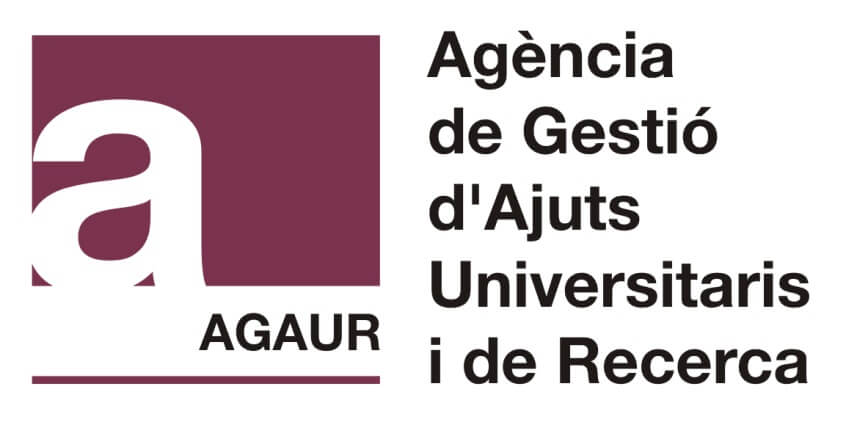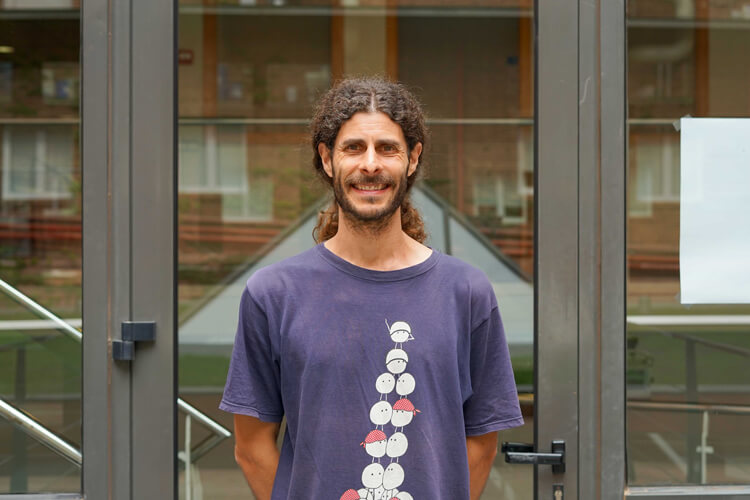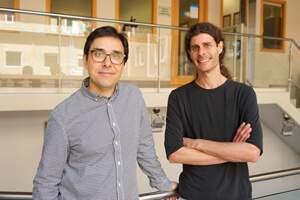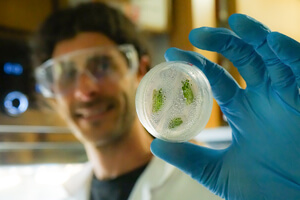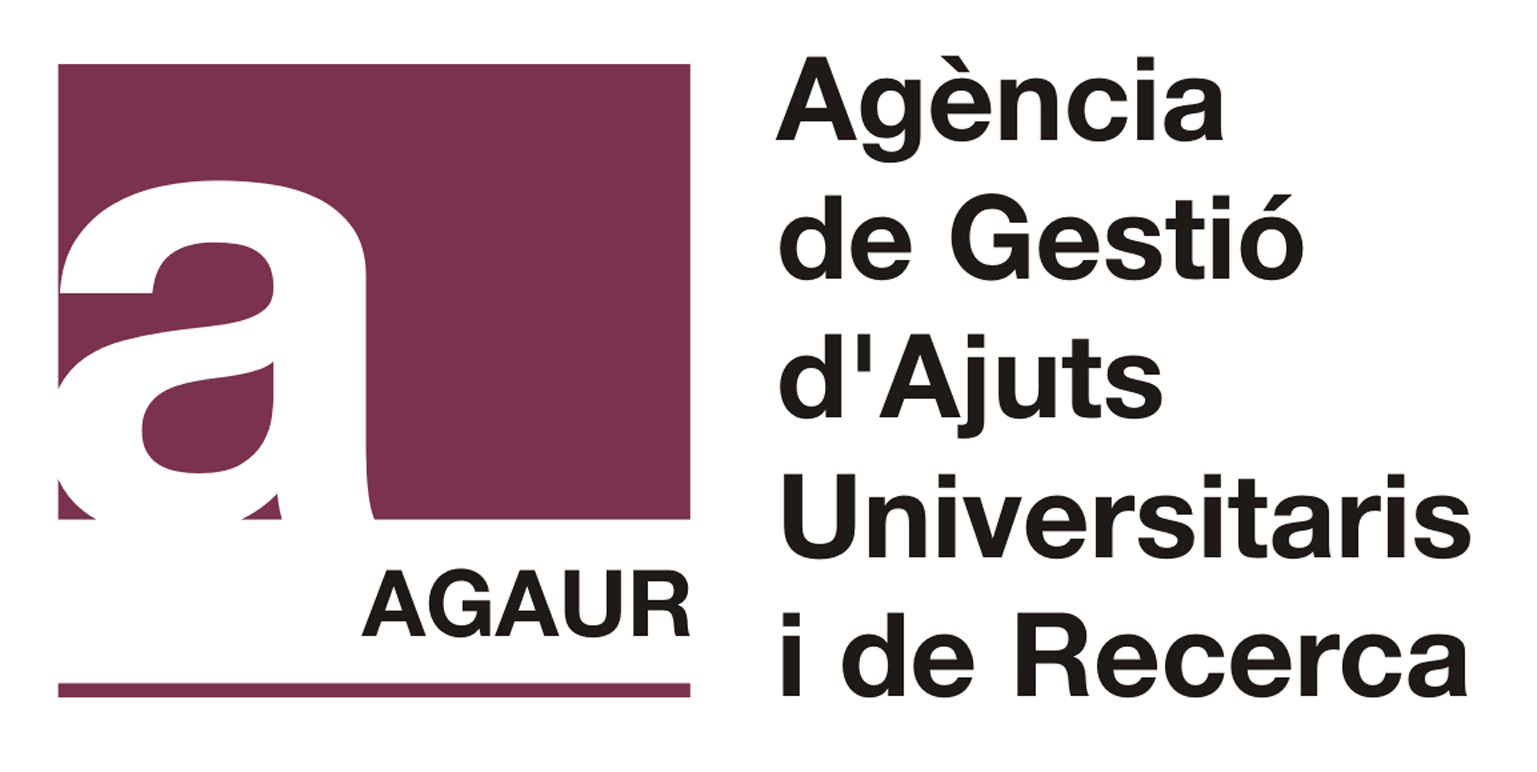Interview with Dr Marçal Gallemí
Dr Marçal Gallemí Rovira has earned one of the prestigious Beatriu de Pinós Grants from the Government of Catalonia, awarded through the Agency for the Management of University and Research Grants (AGAUR), to conduct the Rhamnoalga project at IQS. The aim of the project is to implement new biotechnological applications of microalgae through metabolic engineering and biocatalysis technologies. This project is contributing to a green and sustainable economy by using renewable resources to produce variants of pure rhamnolipids, products that are highly valued in many industrial sectors for their application as biosurfactants. The scaling of this rhamnolipid production will be done in the bioprocess pilot plant located in the CTPTI at IQS.
We spoke with Dr Marçal Gallemí and his supervisor, IQS professor Dr Pau Leivar, about Dr Gallemí joining the Biological and Biotechnological Chemistry Group (GQBB) and the project he will conduct.
Marçal, what has your career as a researcher been like? Have you always conducted research on the plant world?
Yes, actually! I’ve been working with plants for a long time. It’s a sustainable way to get products of interest with a low environmental cost. I did my PhD in Biotechnology at the Centre for Research in Agricultural Genomics (CRAG), a consortium between the CSIC, the UB, and the UAB, where I worked with Arabidopsis thaliana, a plant from the Brassicaceae family that is quite widespread and holds great interest in research. It is a rather well-known plant scientifically because it is very easy to grow and provides many seeds. In addition, it was the first plant to have its genome sequenced.
Following the same line, I then did two postdoctoral stays, the first in Vienna, at the Gregor Mendel Institute of Molecular Plant Biology (GMI), where I worked on the difficult balance between defence systems against pathogens and plant growth, especially in relation to a growth hormone, brassinosteroids, which is also very relevant for the plant in cases of stress. Then, I did a second longer postdoc at the Institute of Science and Technology of Austria (ISTA), where I worked with auxin, another hormone that is very important for plant development. Specifically, I focused on how this hormone regulates the growth and elongation of tissues in plants, modifying the cell wall.
My work had always been in very basic research, with laboratory plant models without concrete application, and I was eager to use my knowledge and experience to engage in somewhat more applied science. I knew Dr Pau Leivar because we were at the CRAG at the same time. I was also aware of his most applied line of research at IQS with photosynthetic algae, and specifically with Chlamydomonas reinhardtii.
We got into contact and talked about biosurfactant research and through this, the project began for the production of rhamnolipids from algae. And here we are now!
What are rhamnolipids specifically?
Marçal G. These products consist of a lipid part and a sugar, with many interesting applications: they are biosurfactants that are used, among others, for bioremediation systems or can potentially be used to stabilize nanoparticles and facilitate their transport function.
The clearest application is currently their use as surfactants and biosurfactants. They are very interesting because they are biodegradable, unlike surfactants that are used generically in the industrial world in equipment cleaning for example. Producing them chemically is very expensive: the lipid and sugar must be synthesized separately and then put together.
There is currently an industrial process for obtaining rhamnolipids from the bacterium Pseudomona aeruginosa, but this has the disadvantage of being pathogenic to humans, especially immunocompromised people, while also producing certain toxins. All this requires working in type II laboratories during production to guarantee the absence of health problems derived from their production both for workers and consumers, which makes the process much more expensive.
Pau L. Despite all this, surfactants are an industrial necessity. Therefore, the market for them is clearly of interest at the moment, and we are trying to replace current ones with more environmentally friendly rhamnolipids.
Is this where your project comes in?
Marçal G. Yes, the project is called Rhamnoalga and it aims to produce biosurfactants – rhamnolipids – from algae. Dr Pau Leivar and Dr Antoni Planas have been working for some time on this line of research in the GQBB group, a group which I have also joined through this project. It involves taking advantage of the ability of algae to produce glycolipids in a more natural, safe, and ecological way. In this case, we are working with the microalgae Chlamydomonas reinhardtii, an aquifer alga that is very easy to grow. A proof of concept has already been done to obtain rhamnolipids from this alga. Now we’re working on improving the process and scaling it up.
“With the Rhamnoalga project we are aiming to produce biosurfactants from algae in a more natural, safe, and ecological way”
How does production based on microalgae work?
Marçal G. Microalgae are definitely an option that enables many substances to be produced in a cleaner and more natural way, along with a clear minimization of waste generated that can be eliminated naturally even if it is generated (algae are considered safe elements in environmental terms).
Pau L. In the field of research, we grow them in the laboratory in a controlled manner with very specific growth conditions that allow us to study their production in a stable way. At the moment, we have incubators with photosynthetic light and we grow them in Erlenmeyer flasks. At some point, we’ll advance to a bioreactor scale.
In the specific case of the industrial production of biosurfactants, the difficulty of working with a pathogenic variant such as Pseudomonas aeruginosa, which is currently implanted, means that there is a lot of interest in the industry to find or generate other strains of microorganisms where the production of rhamnolipids can be transferred. In this sense, there are other species of pseudomonas that are not pathogenic and with which some companies have already generated lines where they have introduced rhamnolipid metabolisms to produce these species.
What is new about your process?
Marçal G. The GQBB is seeking to shake things up and go further to get a photosynthetic microorganism that, unlike other microorganisms, has the ability to absorb CO2 and convert it into biomass and products of interest. This is one of the great values of photosynthetic organisms: the carbon source is not a sugar or an organic acid. It is the CO2 itself that is incorporated into the culture medium and requires a light source (which can be natural) to activate photosynthesis, a process by which the cell transforms light energy into biochemical energy. Thanks to all this, the cost of the process and the carbon footprint are reduced.
“The GQBB is seeking to go further and get a photosynthetic microorganism that is able to absorb CO2 and convert it into biomass or products of interest”
Pau L. The proof of concept was carried out in Bernat Miró’s doctoral thesis, in which we found that algae are indeed capable of producing the rhamnolipids we want. Now, the Rhamnoalga project led by Marçal is aiming to optimize this production, scale it up, and get to the next step, which will be obtaining rhamnolipids on an industrial scale.
Marçal G. Having verified that the microalgae production system works, now is the time to first optimize the bioprocess (improve the strains of this microalgae to improve production performance), then scale up production and make it economically profitable.
“It’s time to improve this process that works, scale it up, and make it profitable”
Marçal, what does it mean to you to have earned the Beatriu de Pinós Grant?
The impact of this grant is incredible, I couldn’t be happier! It entails a three-year grant and is one of the best ones available throughout Spain. It will enable me to become a consolidated and permanent researcher. It is the preliminary step towards becoming a principal investigator. I came here at a time when the project was consolidating, with very solid established bases, and a grant that allows me to do very applied research that I wanted to do, covering different stages: obtaining genetically improved microalgae, improving the bioprocess of the product of interest, in this case, the rhamnolipid, and producing it on a medium/large scale.
“Thanks to the IQS bioprocess pilot plant, we have the opportunity to scale up the production of rhamnolipids from microalgae”
That’s why, thanks to this postdoc and to IQS’s bioprocess pilot plant, I have the opportunity to fine-tune the scaling of this rhamnolipid production, which represents a great added value to my training. The Beatriu de Pinós Grant, and this project in particular, give me a very broad vision, from academic education and student supervision to doing research with the opportunity to get involved in this project with the potential for technology transfer. I will change my line of basic research to a much more applied one, as I had hoped, and that makes me very happy!
Finally, Pau, what does the addition of Marçal to the GQBB group represent?
We are very happy he has joined our group, the Biochemistry Laboratory, and the Biotechnology unit with microalgae. With his background and experience, a researcher like Marçal will be a great boost for the project, with contributions and discussions of key issues. In addition, with his way of “living science,” he will surely have a very positive impact on other researchers and students.
These will be his main contributions to IQS, but we must also highlight that he has earned a Beatriu de Pinós Grant, a highly competitive contract that aims to incorporate researchers into the Catalan research system. Therefore, a researcher who earns this grant can consolidate their research and professional career in a very synergistic way: Marçal will gain a lot of experience in oriented research, but also in teaching and technology transfer, and he will emerge stronger from this experience.
RELATED PEOPLE:
Marçal Gallemí Rovira, PhD
RESEARCH GROUP
Biological and Biotechnological Chemistry
RELATED PROJECTS
RHAMNOALGA (Sustainable Production of valuable RhamnoLipid biosurfactants in green microalgae)
